
March 2005 The Daley NewsHooray, it is finally Autumn and the hot weather should be starting to ease off, and the rain begin (we can only hope). Everything should be looking good and growing well with lots of different fruits coming into season, Carambolas, Ceylon Hill Gooseberries, Chestnuts, Pecans, Persimmons, Feijoas, Finger Limes, Grumichamas, Kiwifruit, Longans, Monstero deliciosa, Rosellas and Pomegranates to name a few. Some news from the nursery – A few farewells and welcomes
Story of the Month
|
Fruit Trees





 I would like to say goodbye to Geoff and Emma, and wish them the best of luck in there new studies and personal pursuits, keep in touch. I (Tara) also will be leaving the nursery soon to have my second baby, so I am sad to be leaving the nursery and all the people that I communicate with over the phone and internet, I’m sure we will meet or speak again soon. I would also like to take the opportunity to welcome our new staff April, in the office, Shelley, Michelle and Katie in dispatch and propagation and can see that they will all be a great asset to the nursery and hope they enjoy working here as much as I have.
I would like to say goodbye to Geoff and Emma, and wish them the best of luck in there new studies and personal pursuits, keep in touch. I (Tara) also will be leaving the nursery soon to have my second baby, so I am sad to be leaving the nursery and all the people that I communicate with over the phone and internet, I’m sure we will meet or speak again soon. I would also like to take the opportunity to welcome our new staff April, in the office, Shelley, Michelle and Katie in dispatch and propagation and can see that they will all be a great asset to the nursery and hope they enjoy working here as much as I have.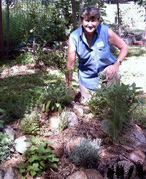 This is a small business in the Brisbane area called EDIBLE GARDENS which is designed to help organisations or individuals set up organic based edible gardens either in accessible outside spaces or in smaller spaces on decks/verandahs or balconies where pots, boxes and hanging baskets can be used for easy access. Edible Gardens operates fully on organic gardening principles, a garden philosophy which supports environmental sustainability, biodiversity, energy conservation and healthy living.
This is a small business in the Brisbane area called EDIBLE GARDENS which is designed to help organisations or individuals set up organic based edible gardens either in accessible outside spaces or in smaller spaces on decks/verandahs or balconies where pots, boxes and hanging baskets can be used for easy access. Edible Gardens operates fully on organic gardening principles, a garden philosophy which supports environmental sustainability, biodiversity, energy conservation and healthy living. 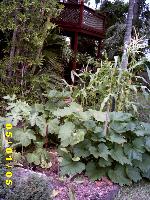 there is always something to do and enjoy in the productive garden: for example, pruning, watering, mulching or simply experiencing the garden’s many colours, textures and earthy aromas. And of course, the healthy edible products can be harvested when needed, a little at a time and in easy reach, to be enjoyed with friends. For example, fruits such as vine ripened passionfruit, jaboticaba or black sapote(chocolate pudding fruit), and our own natives including the Kakadu plum, finger lime, beach cherry, riberry, parsley, lettuce, spring onions, spinach, cherry tomatoes, dwarf beans, dill, to name but a few of the many possibilities Barbara is knowledgeable on.
there is always something to do and enjoy in the productive garden: for example, pruning, watering, mulching or simply experiencing the garden’s many colours, textures and earthy aromas. And of course, the healthy edible products can be harvested when needed, a little at a time and in easy reach, to be enjoyed with friends. For example, fruits such as vine ripened passionfruit, jaboticaba or black sapote(chocolate pudding fruit), and our own natives including the Kakadu plum, finger lime, beach cherry, riberry, parsley, lettuce, spring onions, spinach, cherry tomatoes, dwarf beans, dill, to name but a few of the many possibilities Barbara is knowledgeable on.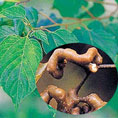 A fast growing, handsome and graceful tree that bears strange fruiting bodies on the tips of the branches. A small to medium tree, native to moist areas and mountains of China, although cultivation spread long ago to Japan, Korea and India. Japanese raisin trees are cold-hardy, deciduous and can grow to a height of 21m but is more commonly around 9m with a single trunk and a rounded head. Raisin trees are particularly handsome when planted in groups and have good autumn colours. They have deeply fissured bark with gently undulating branches and overlapping leaves. They produce white clusters of fragrant flowers in spring which are followed by fruit in autumn. A good landscape tree, ideal as a shade tree and will add interest to any garden.
A fast growing, handsome and graceful tree that bears strange fruiting bodies on the tips of the branches. A small to medium tree, native to moist areas and mountains of China, although cultivation spread long ago to Japan, Korea and India. Japanese raisin trees are cold-hardy, deciduous and can grow to a height of 21m but is more commonly around 9m with a single trunk and a rounded head. Raisin trees are particularly handsome when planted in groups and have good autumn colours. They have deeply fissured bark with gently undulating branches and overlapping leaves. They produce white clusters of fragrant flowers in spring which are followed by fruit in autumn. A good landscape tree, ideal as a shade tree and will add interest to any garden.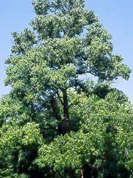 They will grow in most conditions although some protection from heavy winds while young is recommended. Although native to partially shaded sites, full sun helps hasten flowering and ripening. The raisin tree tolerates a wide range of soil conditions and thrives in sandy loam. Although somewhat tolerant of drought, raisin trees do best with a regular supply of moisture. Little is known about the fertilization needs of the tree, but a light to moderate fertilising in mid-spring is probably useful. The tree tends to prune itself, dropping the lower branches as the tree grows. Raisin trees are apparently free of any significant pests and diseases. Trees begin fruiting at about 3 years from planting and are self-pollinating.
They will grow in most conditions although some protection from heavy winds while young is recommended. Although native to partially shaded sites, full sun helps hasten flowering and ripening. The raisin tree tolerates a wide range of soil conditions and thrives in sandy loam. Although somewhat tolerant of drought, raisin trees do best with a regular supply of moisture. Little is known about the fertilization needs of the tree, but a light to moderate fertilising in mid-spring is probably useful. The tree tends to prune itself, dropping the lower branches as the tree grows. Raisin trees are apparently free of any significant pests and diseases. Trees begin fruiting at about 3 years from planting and are self-pollinating.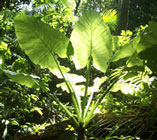 The cunjevoi is a beautiful landscaping plant that is perfect for shady, damp areas in any home garden. Its native range extends from North-Eastern NSW, through Queensland and into South –Eastern Asia. It is a common sight in the rainforests and their margins and will grow well even if it is given less than ideal conditions. They will tolerate droughts and frosts by dying back to their large woody rhizome, and then reshooting when the rains come and the weather warms up. They grow into a clump of about 1-1.5 m in height and width and a perfect for potted gardens. The rhizomes were used as a food source by Indigenous Australians after lengthy preparation but due to their extremely toxic nature we do not recommend anyone try this plant. All parts of the cunjevoi are poisonous. The cunjevoi is perfect for landscaping around pools and ponds, it will compliment any rainforest planting, as it is a hardy and tropical looking under storey plant. It has green lily like flowers followed by dramatic, attractive red fruits. The cunjevoi is a very versatile plant that always looks great and is well suited to group plantings. It is far less invasive that it’s relative the elephant ears plant.
The cunjevoi is a beautiful landscaping plant that is perfect for shady, damp areas in any home garden. Its native range extends from North-Eastern NSW, through Queensland and into South –Eastern Asia. It is a common sight in the rainforests and their margins and will grow well even if it is given less than ideal conditions. They will tolerate droughts and frosts by dying back to their large woody rhizome, and then reshooting when the rains come and the weather warms up. They grow into a clump of about 1-1.5 m in height and width and a perfect for potted gardens. The rhizomes were used as a food source by Indigenous Australians after lengthy preparation but due to their extremely toxic nature we do not recommend anyone try this plant. All parts of the cunjevoi are poisonous. The cunjevoi is perfect for landscaping around pools and ponds, it will compliment any rainforest planting, as it is a hardy and tropical looking under storey plant. It has green lily like flowers followed by dramatic, attractive red fruits. The cunjevoi is a very versatile plant that always looks great and is well suited to group plantings. It is far less invasive that it’s relative the elephant ears plant. 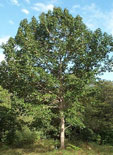 White Beech is a large, handsome, semi-deciduous tree that makes a fantastic feature tree in large gardens or parks. It is also a very useful bush regeneration and cabinet timber tree as it is hardy, moderately fast growing and produces a durable, easily-worked, and non-shrinking timber said to be as valuable as Red Cedar (Toona ciliata). White Beech have few if any pests which means less maintenance and better timber. They have beautiful horizontal branches which are perfect forshade and for bird perches, which can help assist in natural regeneration. These trees are classed as fire retardant and make a great Camphor Laurel replacement tree. Its native range is from the Illawarra in southern NSW to Cooktown in north QLD, where it is found growing in the warmer coastal areas or in riverine rainforests. These trees are beautiful especially when covered in masses of cream and purple flowers which are followed by large clusters of purple-blue berries. They also have a lovely pink flush of growth which looks great. They are semi-deciduous, defoliating there leaves for a short period in spring.
White Beech is a large, handsome, semi-deciduous tree that makes a fantastic feature tree in large gardens or parks. It is also a very useful bush regeneration and cabinet timber tree as it is hardy, moderately fast growing and produces a durable, easily-worked, and non-shrinking timber said to be as valuable as Red Cedar (Toona ciliata). White Beech have few if any pests which means less maintenance and better timber. They have beautiful horizontal branches which are perfect forshade and for bird perches, which can help assist in natural regeneration. These trees are classed as fire retardant and make a great Camphor Laurel replacement tree. Its native range is from the Illawarra in southern NSW to Cooktown in north QLD, where it is found growing in the warmer coastal areas or in riverine rainforests. These trees are beautiful especially when covered in masses of cream and purple flowers which are followed by large clusters of purple-blue berries. They also have a lovely pink flush of growth which looks great. They are semi-deciduous, defoliating there leaves for a short period in spring.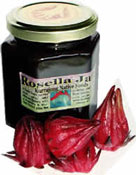 Pick rosella fruit and remove red flesh (outer petals) from inner green seed (berry). You may want to wear gloves as there are fine hairs on the inside berry part.
Pick rosella fruit and remove red flesh (outer petals) from inner green seed (berry). You may want to wear gloves as there are fine hairs on the inside berry part.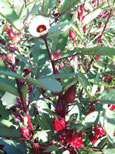 Cool and strain liquid from berry, discard (compost) berry.
Cool and strain liquid from berry, discard (compost) berry.